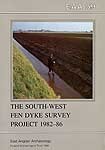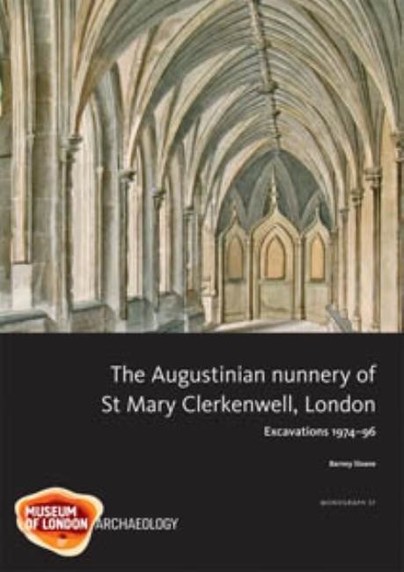
Format: Hardback
Pages: 300
ISBN: 9781901992045
Pub Date: 29 Jan 2013
Series: MoLAS Monograph
Description:
The development of the nunnery site is revealed in this study - from evidence for Iron Age occupation, the nunnery's foundation in 1144 and the expansion of the early convent, through to its conversion in the 16th and 17th centuries to a close of large mansions surrounding the parish church. Drawing together the varied evidence, including illustrations made during the demolition of the nunnery church in 1788-9 and 18th-century surveys, has allowed detailed reconstructions of the church and cloister. Relatively wealthy, located in Londons medieval suburbs and with a dual role as convent and parish church, St Marys story contrasts with that of many other, poorer and more rural, nunneries.

Format: Hardback
Pages: 200
ISBN: 9781842174890
Pub Date: 11 Jan 2013
Illustrations: 8 colour & 82 b/w illustrations
Description:
In the past, textile production was a key part of all ancient societies. The Ancient Near East stands out in this respect with the overwhelming amount of documentation both in terms of raw materials, line of production, and the distribution of finished products. The thirteen intriguing chapters in Textile Production and Consumption in the Ancient Near East describe the developments and changes from household to standardised, industrialised and centralised productions which take place in the region.
They discuss the economic, social and cultural impact of textiles on ancient society through the application of textile tool studies, experimental testing, context studies and epigraphical as well as iconographical sources. Together they demonstrate that the textile industries, production, technology, consumption and innovations are crucial to, and therefore provide an in-depth view of ancient societies during this period. Geographically the contributions cover Anatolia, the Levant, Syria, the Assyrian heartland, Sumer, and Egypt.
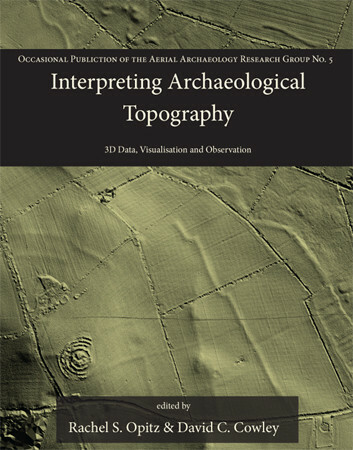
Format: Hardback
Pages: 288
ISBN: 9781842175163
Pub Date: 08 Jan 2013
Illustrations: 185 col illus
Description:
Airborne Laser Scanning (ALS), or lidar, is an enormously important innovation for data collection and interpretation in archaeology. The application of archaeological 3D data deriving from sources including ALS, close-range photogrammetry and terrestrial and photogrammetric scanners has grown exponentially over the last decade. Such data present numerous possibilities and challenges, from ensuring that applications remain archaeologically relevant, to developing practices that integrate the manipulation and interrogation of complex digital datasets with the skills of archaeological observation and interpretation.
This volume addresses the implications of multi-scaled topographic data for contemporary archaeological practice in a rapidly developing field, drawing on examples of ongoing projects and reflections on best practice.Twenty papers from across Europe explore the implications of these digital 3D datasets for the recording and interpretation of archaeological topography, whether at the landscape, site or artefact scale. The papers illustrate the variety of ways in which we engage with archaeological topography through 3D data, from discussions of its role in landscape archaeology, to issues of context and integration, and to the methodological challenges of processing, visualisation and manipulation. Critical reflection on developing practice and implications for cultural resource management and research contextualize the case studies and applications, illustrating the diverse and evolving roles played by multi-scalar topographic data in contemporary archaeology.
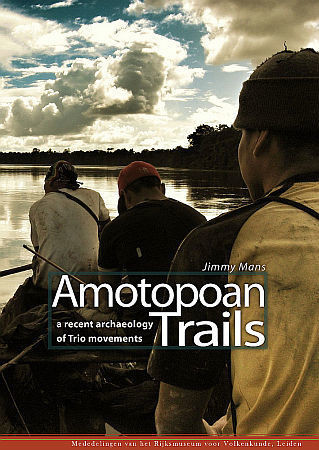
Format: Paperback
Pages: 330
ISBN: 9789088900983
Pub Date: 31 Dec 2012
Description:
In this book the concept of mobility is explored for the archaeology of the Amazonian and Caribbean region. As a result of technological and methodological progress in archaeology, mobility has become increasingly visible on the level of the individual. However, as a concept it does not seem to fit with current approaches in Amazonian archaeology, which favour a move away from viewing small mobile groups as models for the deeper past.
Instead of ignoring such ethnographic tyrannies, in this book they are considered to be essential for arriving at a different past. Viewing archaeological mobility as the sum of movements of both people and objects, the empirical part of Amotopoan Trails focuses on Amotopo, a small contemporary Trio village in the interior of Suriname. The movements of the Amotopoans are tracked and positioned in a century of Trio dynamics, ultimately yielding a recent archaeology of Surinamese-Trio movements for the Sipaliwini River basin (1907-2008). Alongside the construction of this archaeology, novel mobility concepts are introduced. They provide the conceptual footholds which enable the envisioning of mobility at various temporal scales, from a decade up to a century, the sequence of which has remained a blind spot in Caribbean and Amazonian archaeology.

Format: Hardback
Pages: 330
ISBN: 9781842175071
Pub Date: 31 Dec 2012
Description:
Although the Assyrian kingdom that dominated the Ancient Near East between the ninth and seventh centuries BC had a rich material culture, attested particularly by the distinctive stone wall reliefs and colossal gateway figures, practically nothing is known about Assyrian metalwork. There has been no previous survey of this subject, largely because most of the material was not accessible. This volume makes available for the first time a vast amount of previously unpublished metalwork, much of it from the Assyrian capital city of Nimrud, excavated first by Sir Henry Layard between 1845 and 1851 and then by the British School of Archaeology in Iraq between 1949 and 1963.
It emerges that Assyria had a thriving metalworking industry probably superior to any contemporary state in the region, and was producing large quantities of sophisticated bronze and ironwork, of high technical quality and sometimes elaborately decorated. This book will therefore be of interest to archaeologists, art historians and metallurgists. It is the publication of a PhD thesis that was successfully submitted in 1979. It is published here in its original form in order to make the large amount of primary data that it contains available to a wider circle of scholars.
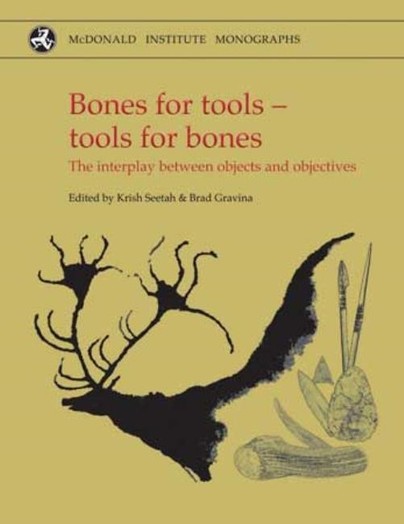
Format: Hardback
Pages: 164
ISBN: 9781902937595
Pub Date: 31 Dec 2012
Illustrations: 99 b/w figs, 26 tables
Description:
Animal procurement and tool production form two of the most tightly connected components of human behaviour. They are tied to our emergence as a genus, were fundamental to the dispersal of our species, and underpin the development of our societies. The interaction between these fundamental activities has been a subject of archaeological inference from the earliest days of the discipline, yet the pursuit of each has tended to encourage and entrench specialist study.
As a result, our understanding of them has developed in full-view but in general isolation of one from the other. This volume begins the process of integrating what have all too often become isolated archaeological and interpretative domains. Exposing and exploring contexts spanning much of prehistory, and drawing data from a wide range of environmental settings, the book covers both sides of the complex inter-relationship between animals, the technologies used to procure them and those arising from them. In taking a more inclusive approach to the material, technological and social dynamics of early human subsistence we have returned to the earliest of those archaeological associations: that between stone tools and animal bones. In revealing the inter-dependence of their relationship, this volume takes what we hope will be a first step towards a revitalized understanding of the scope of past interactions between humans and the world around them.Krish Seetah is Assistant Professor in the Department of Anthropology, Stanford University. His zooarchaeological research focuses on butchering and the socio-economic context of food.Brad Gravina is a member of the laboratory Préhistoire a l'Actuel: Cultures, Evironment et Anthropologie (PACEA) at the University of Bordeaux. His research focuses on the final Middle Palaeolithic of Western Europe with an emphasis on lithic technology and taphonomy.
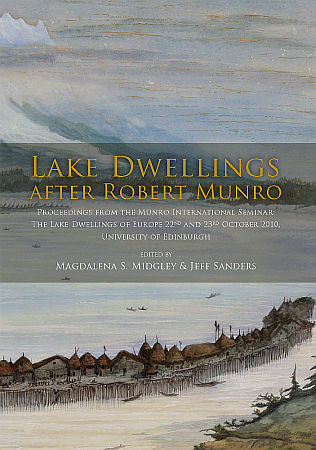
Format: Paperback
Pages: 190
ISBN: 9789088900921
Pub Date: 31 Dec 2012
Description:
Dr Robert Munro (1835-1920) was a distinguished medical practitioner who, in his later life, became a keen archaeologist. His particular interests lay in the lake-dwelling settlements of his native Scotland, known as crannogs, as well as those then being discovered across Europe. In 1885 Robert Munro undertook a review of all lacustrian research in Europe, travelling widely to study collections and visit sites.
The results of this work formed the basis for the prestigious Rhind Lectures at the Society of Antiquaries of Scotland in 1888. These were then published as The Lake-Dwellings of Europe, a landmark publication for archaeology and one that cemented Munro’s archaeological reputation.In 1910 Robert Munro offered the University of Edinburgh a financial gift with which to fund lectures in Anthropology and Prehistoric Archaeology. Over the past century this has been done through the Munro Trust. In 2010, the year of the centenary of the Munro Trust, the University of Edinburgh and the Society of Antiquaries of Scotland jointly celebrated the occasion with a gathering of Continental and British scholars. The papers presented in this publication are the results of that international seminar.This book will engage all those interested in European lake dwellings, wetland archaeology and the history of archaeology in the 19th century. The collected papers explore the historical context of Munro’s work, as well as introducing current research from across Europe. The book will appeal to both the professional and the interested amateur, of which Munro himself represented such an exciting synthesis.
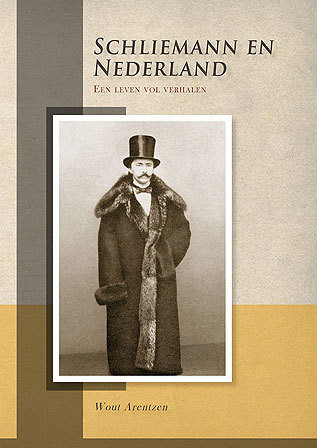
Format: Paperback
Pages: 300
ISBN: 9789088900914
Pub Date: 31 Dec 2012
Description:
This book describes the life of the famous archaeologist and shrewd trader Heinrich Schliemann (1822-1890) from a Dutch perspective since his commercial succes started in the Netherlands. We see how two myths meet: the myth of the ancient city Troy and the the myth of the poor boy that was determined to find the remains of this legendary city.Dutch text.
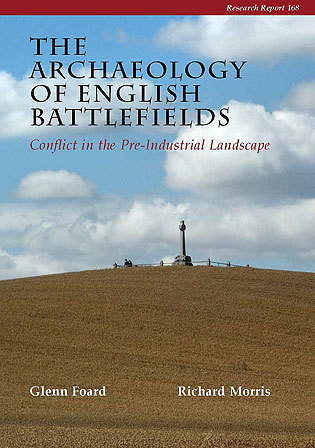
Format: Paperback
Pages: 198
ISBN: 9781902771885
Pub Date: 31 Dec 2012
Illustrations: col illus
Description:
This volume presents the results of the first national assessment of English battlefields. The primary written sources are complemented by the results of extensive fieldwork, computer-based terrain reconstruction, and scientific analysis of artefacts recovered from battlefields. The authors proposed methodology for investigating battlefield locations is validated by the recent identification of the precise location of the Battle of Bosworth, some 3km from the traditional site.

Format: Paperback
Pages: 100
ISBN: 9781907588044
Pub Date: 01 Dec 2012
Series: East Anglian Archaeology Monograph
Description:
This publication describes a relatively small excavation (by CAM ARC, now Oxford Archaeology East), whose size belies its significance. Incredibly, this is the first properly documented archaeological excavation in the core of Wisbech - an historic town long suspected to have preserved interesting medieval deposits. It fills a gaping void in previous knowledge of the character and quality of the archaeological remains in the town and represents an important first step in redressing the regional imbalance in published medieval port sequences, such as those of King's Lynn and Great Yarmouth.
The site lies within the confines of the New Market, to the north of the Norman castle. An impressive sequence of deeply stratified medieval to early post-medieval deposits was revealed, demonstrating at least thirteen building phases, the earliest of which dates to the 13th century. One structure contained evidence for in-situ metalworking during the mid 14th to mid 15th century. The buildings were each sealed by fine silts deposited during episodic flooding which can be broadly linked to documented climatic conditions of the period. Detailed recording was achieved through micromorphological analysis and the use of high resolution thin sections. While the alternate sequence of occupation and flooding found at Wisbech is broadly comparable to deposits in other regional port towns, it is almost without parallel in terms of its completeness, depth and state of preservation. A wealth of organic remains and subtle features are present, which rarely survive elsewhere in East Anglia. The discovery of this important archaeological resource highlights the requirement for consideration of its future management.
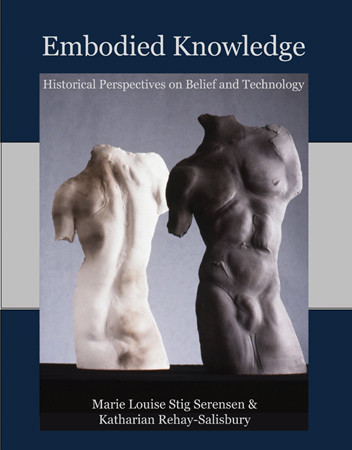
Format: Hardback
Pages: 176
ISBN: 9781842174906
Pub Date: 30 Nov 2012
Illustrations: 42 b/w illus
Description:
The body is the main forum for learning about how to do, think and believe and it is a starting point for the granting and forming of many forms of meaning. Fourteen papers explore the relationship between knowledge and the body through a series of historical and archaeological case studies. More specifically, it considers the concept of embodied knowledge by exploring some of the apparent diverse and yet shared forms of what may be called embodied knowledge.
The papers share a focus on knowledge as it is implicit and expressed through the human body and bodily action, and as it formed through intentional practices. But what is this kind of knowledge? Using specific case studies of knowledgeable actions, the book explores embodied knowledge through a focus on practice. It does so through two different, yet interconnected aspects of how such knowledge expresses itself: belief and technology.
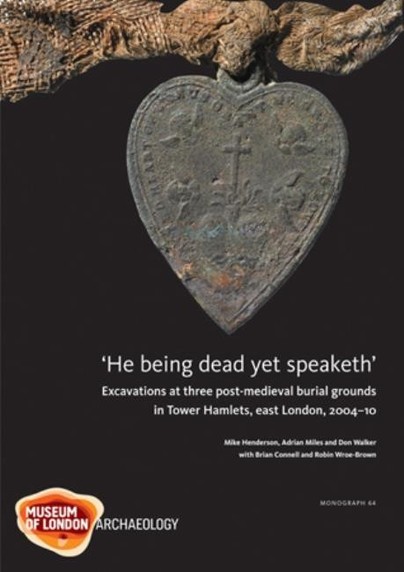
Format: Hardback
Pages: 370
ISBN: 9781907586156
Pub Date: 30 Nov 2012
Series: MoLAS Monograph
Description:
The latest in a series on post-medieval burial produced by MOLA, this volume reports on three non-Church of England burial grounds in the London Borough of Tower Hamlets, excavated between 2004 and 2010. It looks at over 1350 burials of Baptists, Roman Catholics and Nonconformists, the majority of whom died in 1820-54, and examines the archaeological and osteological evidence, along with the historical and documentary sources. The discussions aim to place the three populations within the wider context of 19th-century London and Britain, with the findings well illustrated and fully tabulated throughout.
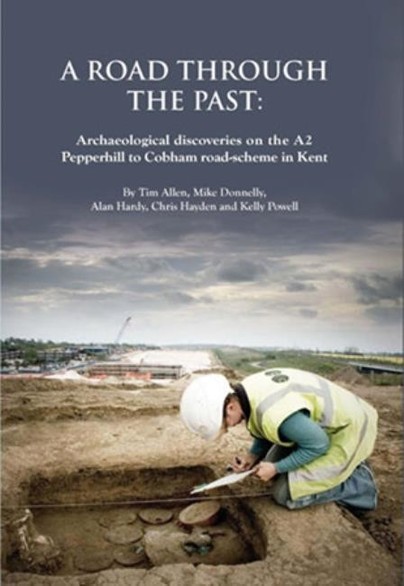
Format: Hardback
Pages: 620
ISBN: 9780904220681
Pub Date: 15 Oct 2012
Series: Oxford Archaeology Monograph
Description:
Excavations along the new road line have revealed nearly 6000 years of human activity, from a massive marker post erected by early Neolithic farmers at the head of a dry valley to a bizarre burial of several different animals dating to the sixteenth century AD. Prehistoric discoveries include two enclosures of the middle Bronze Age, both associated with some of the earliest cobbled roads in Kent, a collection of Iron Age storage pits rich in diverse deliberate offerings, and the emergence of a nucleated hamlet in the middle Iron Age. Most exciting were rich cremation burials of the late Iron Age and early Roman periods, probably successive generations of a local family, whose rise to prominence coincides with the growth of the cult centre at Springhead nearby.
The metal vessels include types new to Britain, the pottery stamps suggest the movement of continental potters to Kent, and one grave has the clearest evidence of furniture yet found from early Roman Britain. Medieval settlements of the late 11th-14th centuries mirror the renewed importance of Watling Street after the Norman conquest, and its eventual return to obscurity due to competition from the ferry from London to Gravesend.
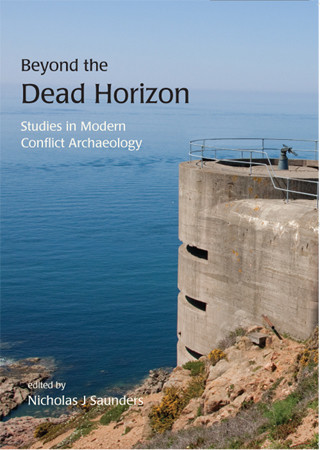
Format: Paperback
Pages: 240
ISBN: 9781842174715
Pub Date: 10 Sep 2012
Illustrations: 90 col & b/w illus
Description:
The new interdisciplinary study of modern conflict archaeology has developed rapidly over the last decade. Its anthropological approach to modern conflicts, their material culture and their legacies has freed such investigations from the straitjacket of traditional 'battlefield archaeology'. It offers powerful new methodologies and theoretical insights into the nature and experience of industrialised war, whether between nation states or as civil conflict, by individuals as well as groups and by women and children, as well as men of fighting age.
The complexities of studying wars within living memory demand a new response - a sensitised, cross-disciplinary approach which draws on many other kinds of academic study but which does not privilege any particular discipline. It is the most democratic kind of archaeology - one which takes a bottom-up approach - in order to understand the web of emotional, military, political, economic and cultural experiences and legacies of conflict. These 18 papers offer a coherent demonstration of what modern conflict archaeology is and what it is capable of and offers an intellectual home for those not interested in traditional 'war studies' or military history, but who respond to the idea of a multidisciplinary approach to all modern conflict.
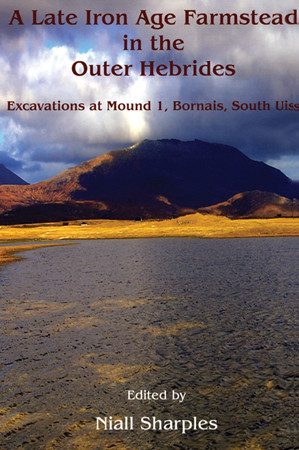
Format: Hardback
Pages: 280
ISBN: 9781842174692
Pub Date: 30 Jun 2012
Illustrations: 111 col & b/w illus
Description:
The settlement at Bornais consists of a complex of mounds which protrude from the relatively flat machair plain in the township of Bornais on the island of South Uist. This sandy plain has proved an attractive settlement from the Beaker period onwards; it appears to have been intensively occupied from the Late Bronze Age to the end of the Norse period. Mound 1 was the original location for settlement in this part of the machair plain; pre-Viking activity of some complexity is present and it is likely that the settlement activity started in the Middle Iron Age, if not earlier.
The examination of the mound 1 deposits provides an important contribution to our understanding of the Iron Age sequence in the Atlantic province. The principal contribution comprises the large quantities of mammal, fish and bird bones, carbonised plant remains and pottery, which can be accurately dated to a fairly precise and narrow period in the 1st millennium AD. These are augmented by a substantial collection of small finds which included distinctive bone artefacts. The contextual significance of the site is based on the survival of floor deposits and a burnt-down roof; the floor deposits can be compared with abandonment and adjacent midden deposits providing contrasting contextual environments that help to clarify depositional processes. The burning down of the house and the excellent preservation of the deposits within it provide an unparalleled opportunity to examine the timber superstructure of the building and the layout of the material used by the inhabitants.

















